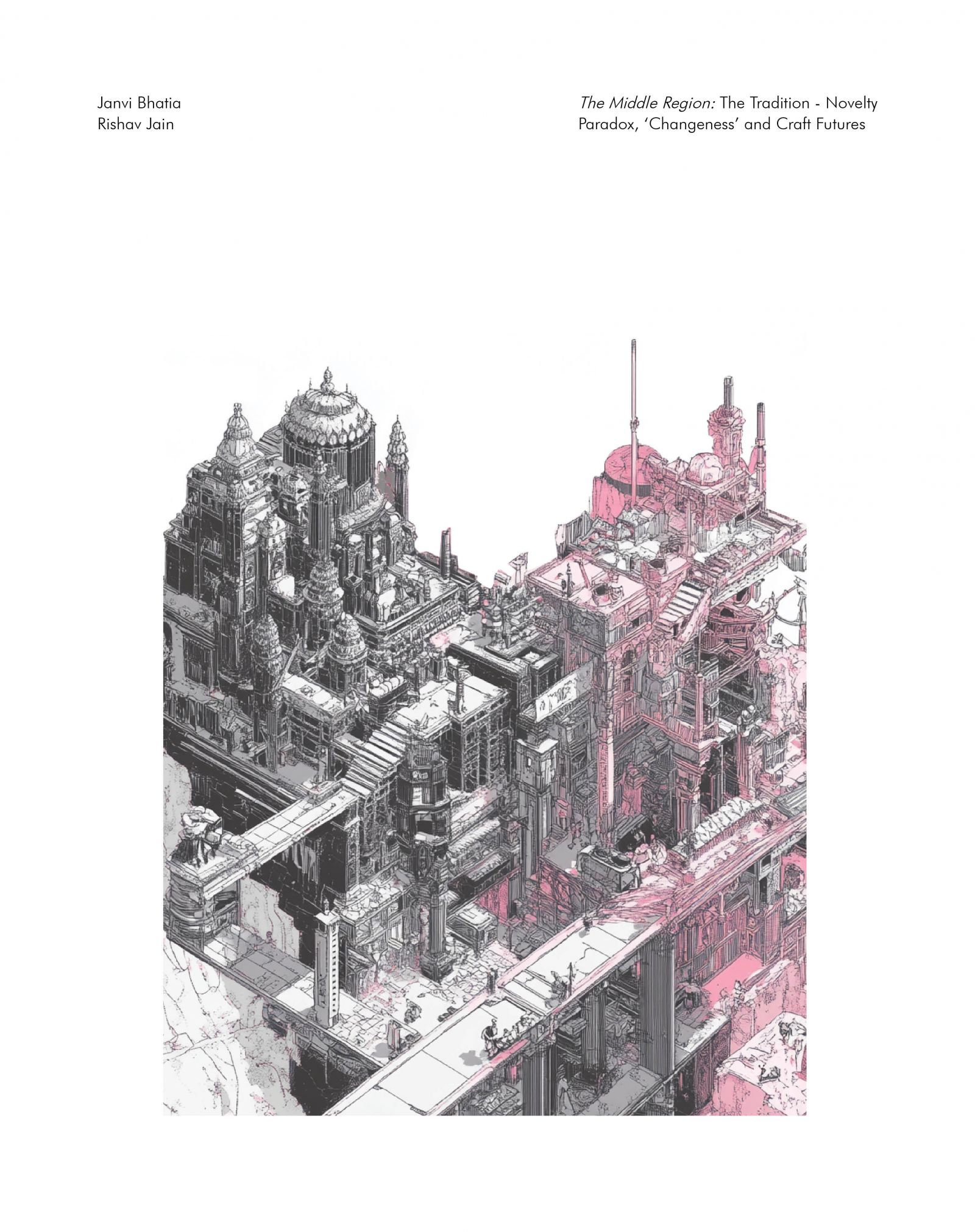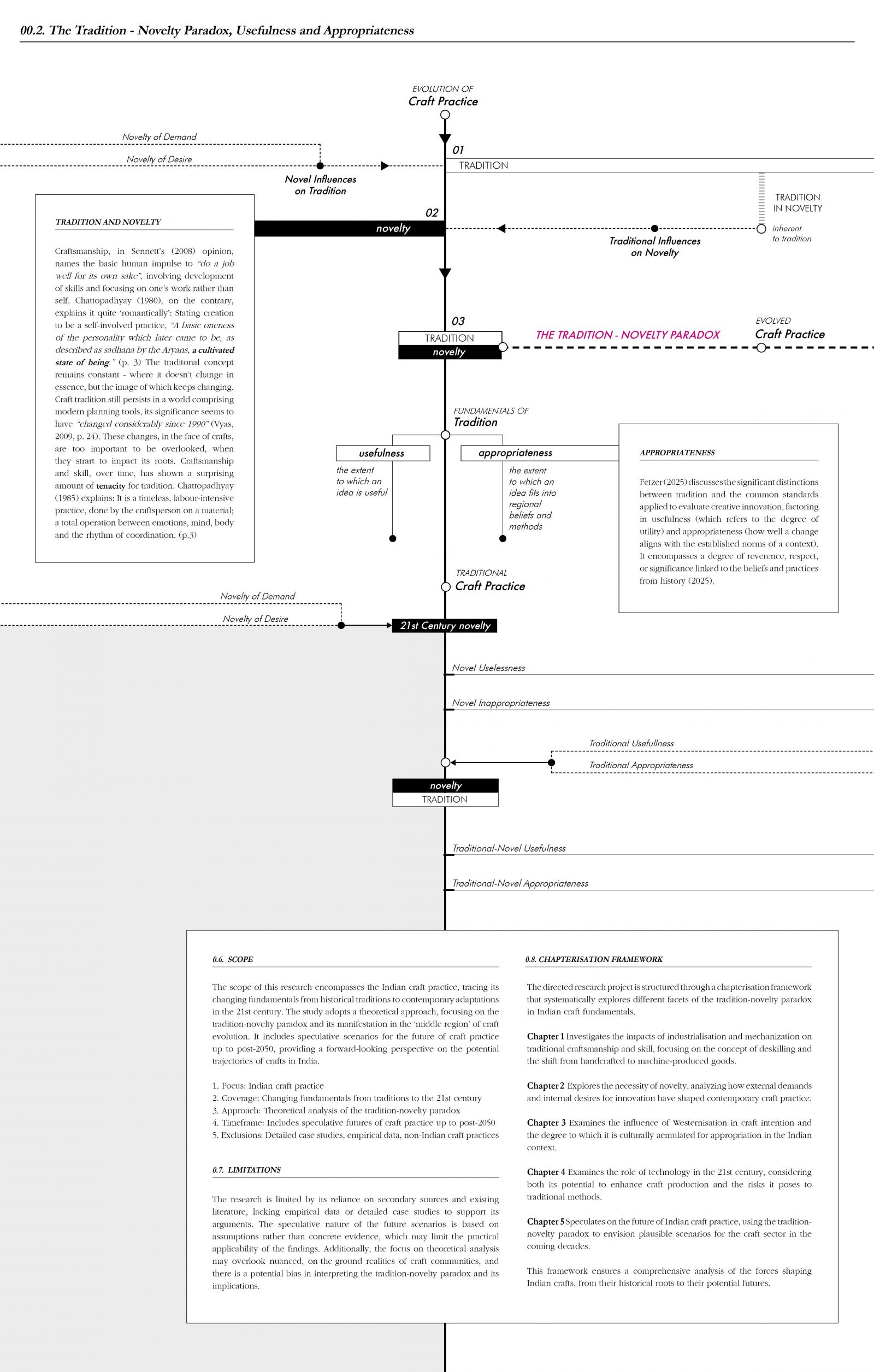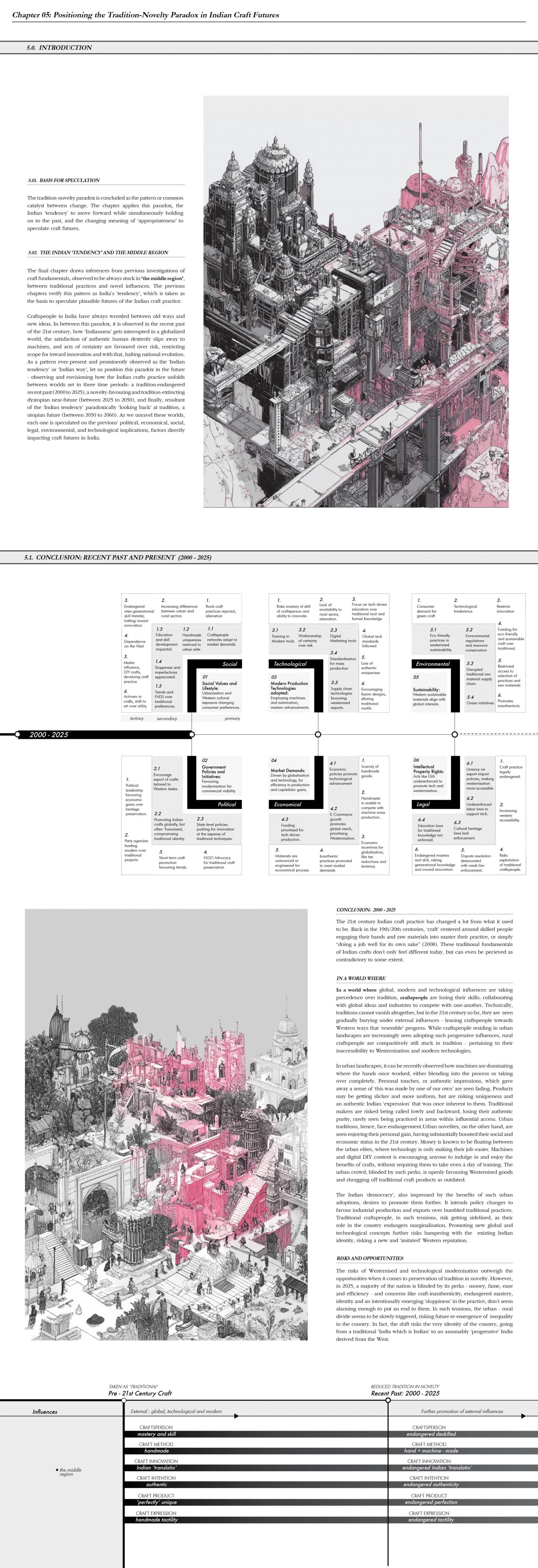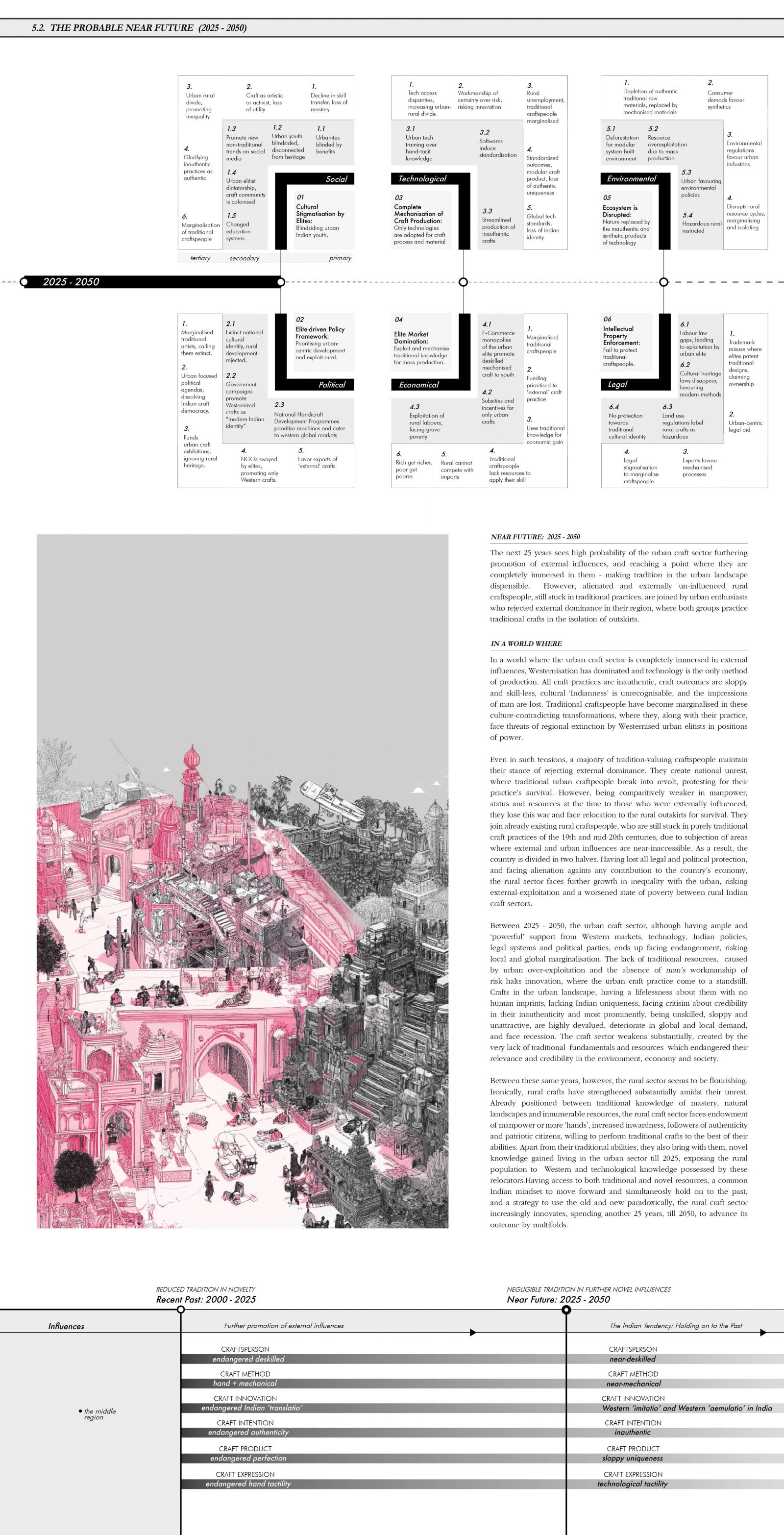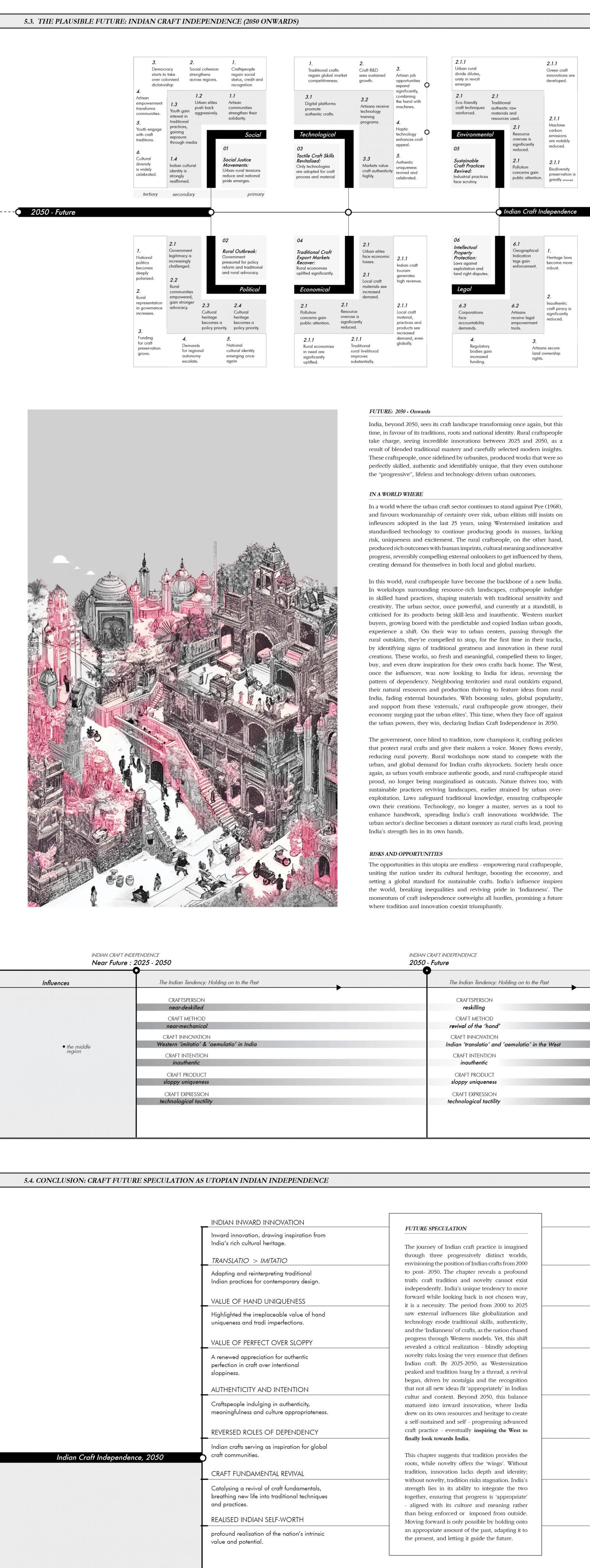Your browser is out-of-date!
For a richer surfing experience on our website, please update your browser. Update my browser now!
For a richer surfing experience on our website, please update your browser. Update my browser now!
This research revolves around analysing the ‘in-betweens’ in the changing fundamentals of the Indian craft practice. Indian craft fundamentals, compared to the historic tradition-laid, have persistently faced vulnerability since their origin. Steeped in ancient traditions, the practice has long grappled with imposed currents of novelty, pertaining to its impositions, from changes demanded by surrounding or desired by oneself. In such environments of change, deciding the degree to which their core essence is ‘negotiable’ lies in the ‘middle’ of preserving the existing and adopting the new. Thus rise paradoxical tensions between retaining tradition and adapting novelty, where one may be given precedence over the other to exist independently, or both may be treated as irreplaceable, enforcing coexistence. This tradition-novelty paradox is used as a primary lens to analyse core fundamentals of the craft practice undergoing change, from historical accounts of tradition down to novelty adopted in the 21st century. These fundamentals are traced through time and changing identities, to identify the ‘in-betweens’, such as the negotiability of tradition in adapting the new, the appropriateness, meaningfulness and usefulness of the new in the old, and finally, the need for re-employment of the old to add appropriateness, meaningfulness and usefulness to the new, as ‘the middle region’.
View Additional Work